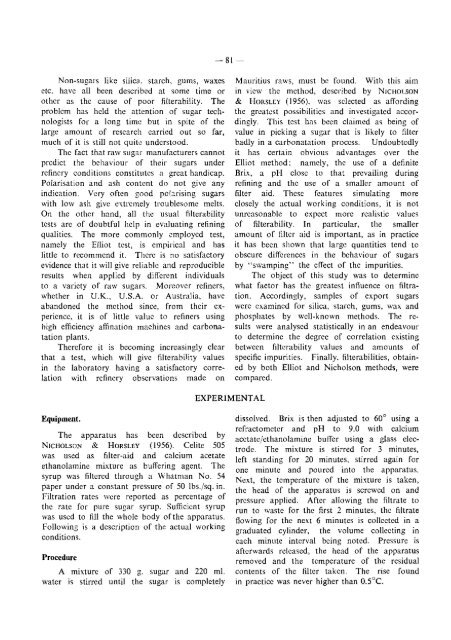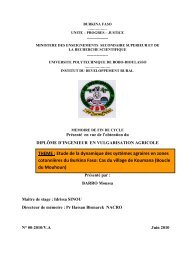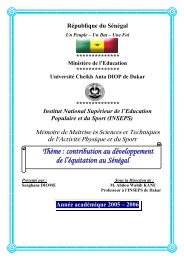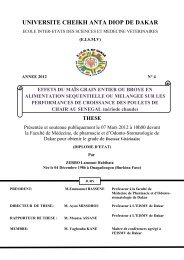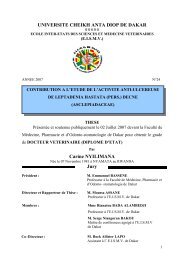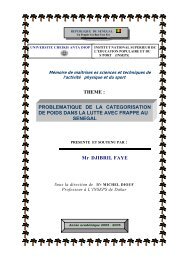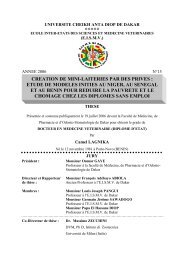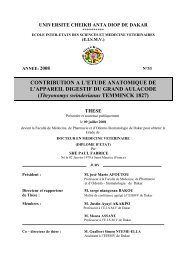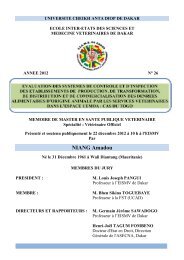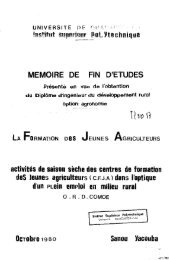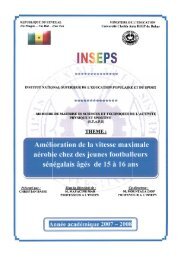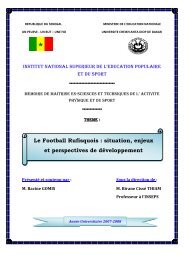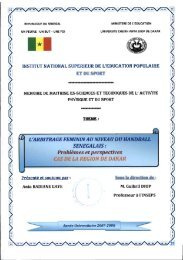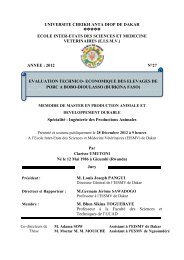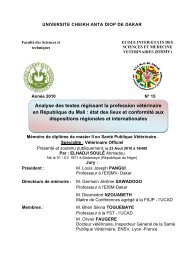Annual Report 1961 - BEEP
Annual Report 1961 - BEEP
Annual Report 1961 - BEEP
- No tags were found...
Create successful ePaper yourself
Turn your PDF publications into a flip-book with our unique Google optimized e-Paper software.
-81-Non-sugars like silica, starch, gums, waxesetc. have all been described at some time orother as the cause of poor filterability. Theproblem has held the attention of sugar technologistsfor a long time but in spite of thelarge amount of research carried out so far,much of it is still not quite understood.The fact that raw sugar manufacturers cannotpredict the behaviour of their sugars underrefinery conditions constitutes a great handicap.Polarisation and ash content do not give anyindication. Very often good polarising sugarswith low ash give extremely troublesome melts.On the other hand, all the usual filterabilitytests arc of doubtful help in evaluating refiningqualities. The more commonly employed test,namely the EJliot test, is empirical and haslittle to recommend it. There is no satisfactoryevidence that it will give reliable and reproducibleresults when applied by different individualsto a variety of raw sugars. Moreover refiners,whether in U.K., U.S.A. or Australia, haveabandoned the method since, from their experience,it is of little value to refiners usinghigh efficiency affination machines and carbonatationplants.Therefore it is becoming increasingly clearthat a test, which will give filterability valuesin the laboratory having a satisfactory correlationwith refinery observations made onMauritius raws, must be found. With this aimin view the method, described by NICHOLSON& HORSLEY (1956), was selected as affordingthe greatest possibilities and investigated accordingly.This test has been claimed as being ofvalue in picking a sugar that is likely to filterbadly in a carbonatation process. Undoubtedlyit has certain obvious advantages over theElliot method; namely, the use of a definiteBrix, a pH close to that prevailing duringrefining and the use of a smaller amount offilter aid. These features simulating moreclosely the actual working conditions, it is notunreasonable to expect more realistic valuesof filterability. In particular, the smalleramount of filter aid is important, as in practiceit has been shown that large quantities tend toobscure differences in the behaviour of sugarsby "swamping" the effect of the impurities.The object of this study was to determinewhat faetor has the greatest influence on filtration.Accordingly, samples of export sugarswere examined for silica, starch, gums, wax andphosphates by well-known methods. The resultswere analysed statistically in an endeavourto determine the degree of correlation existingbetween filterability values and amounts ofspecific impurities. Finally, filterabilities, obtainedby both Elliot and Nicholson methods, werecompared.EXPERIMENTALEquipment.The apparatus has been described byNICHOLSON & HORSLEY (1956). Celite 505was used as filter-aid and calcium acetateethanolamine mixture as buffering agent. Thesyrup was filtered through a Whatrnan No. 54paper under a constant pressure of 50 lbs./sq. in.Filtration rates were reported as percentage ofthe rate for pure sugar syrup. Sufficient syrupwas used to fill the whole body ofthe apparatus.Following is a description of the actual workingconditions.ProcedureA mixture of 330 g. sugar and 220 m!.water is stirred until the sugar is completelydissolved. Brix is then adjusted to 60° using arefractometer and pH to 9.0 with calciumacetate/ethanolamine buffer using a glass electrode.The mixture is stirred for 3 minutes,left standing for 20 minutes, stirred again forone minute and poured into the apparatus.Next, the temperature of the mixture is taken,the head of the apparatus is screwed on andpressure applied. After allowing the filtrate torun to waste for the first 2 minutes, the filtrateflowing for the next 6 minutes is collected in agraduated cylinder, the volume collecting ineach minute interval being noted. Pressure isafterwards released, the head of the apparatusremoved and the temperature of the residualcontents of the filter taken. The rise foundin practice was never higher than 0.5°C.


